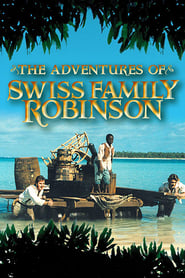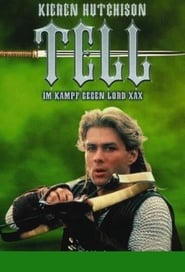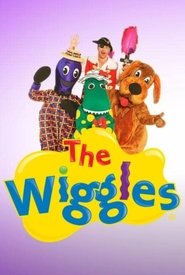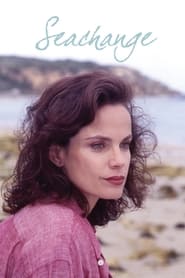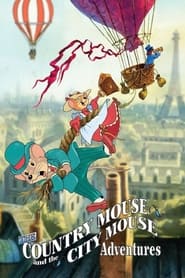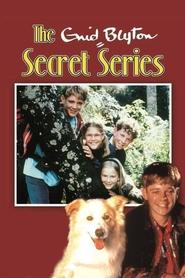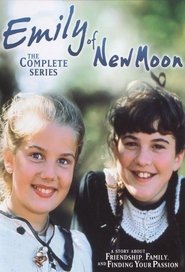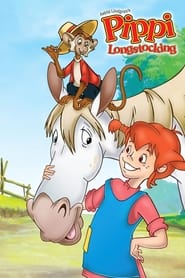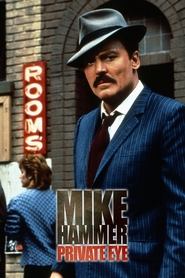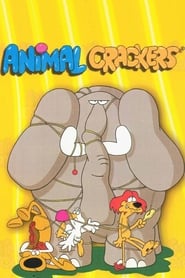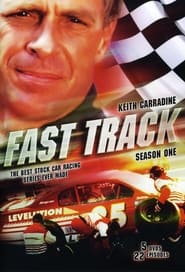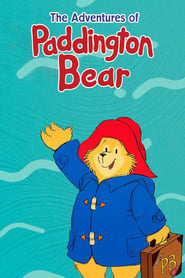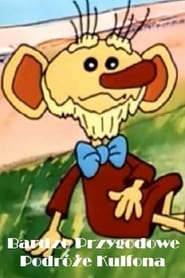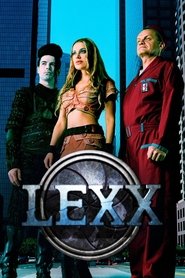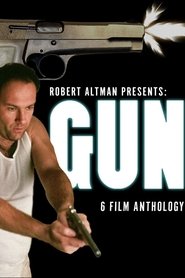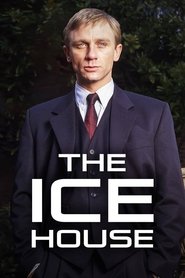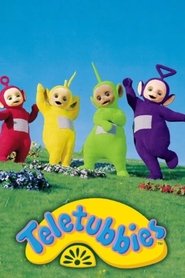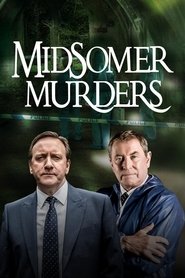New TV Series on Hoopla - Page 77
-
The Adventures of Swiss Family Robinson
1998
star 5.9Classic saga of the merchant and his family shipwrecked on a South Seas island. This adaptation of the Johann David Wyss tale was one of the Pax network's initial offerings. -
The Legend of William Tell
1998
star 5.4The Legend of William Tell is a 16-part television fantasy/drama series produced in 1998 by Cloud 9 Productions in New Zealand. The basic premise of the series — a crossbow-wielding rebel defies a corrupt governor — and the name of the title character were adopted from the traditional story, but the series was set in a fantasy world and featured supernatural themes. Described by executive producer Raymond Thompson as "Star Wars on the planet Earth", this is a fantasy saga of bravery, magic, myth and romance. William Tell is the youthful leader of a band of young, ‘brat pack' outlaws, forever hunted by the forces of darkness, led by Xax and Kreel, who have usurped power in their homeland. The series of self-contained stories follows Will's quest to restore young Princess Vara to her rightful place on the royal throne and defeat Xax and Kreel's forces — and by doing so, bring back peace and order to the Kingdom of Kale. There is action and adventure along the way, magic, creatures, mystery, -
The Wiggles
1998
The Wiggles
1998
star 6.1A show geared for babies up to older toddlers. This show is full of music, teaching kids songs and easy dances. -
SeaChange
1998
SeaChange
1998
star 7.8SeaChange is a popular Australian television show that ran for 39 episodes from 1998 to 2000 on the ABC. It was created by Andrew Knight and Deborah Cox and starred Sigrid Thornton, David Wenham, William McInnes, John Howard, Tom Long and Kerry Armstrong. The director was Michael Carson. Filming was based at Barwon Heads, Victoria and St Leonards, Victoria, both locations being on the Bellarine Peninsula. A number of streets in the St Leonards Sea Change Estate have since been named to acknowledge some of the characters of the series. Many scenes were also filmed in Williamstown, including the exterior of the Williamstown Life Saving Club, which became the court house of Pearl Bay. -
The Country Mouse and the City Mouse Adventures
1998
star 7.7Follow mice Emily and her cousin Alexander as they go on adventures around the world in the early 20th century, usually to stop the evil rat No-Tail No-Goodnik. -
Emily of New Moon
1998
Emily of New Moon
1998
star 8.8Emily of New Moon is a Canadian television series, which aired on CBC Television from 1998 to 2000. The series originally aired in the United States on the Cookie Jar Toons block on This TV and it is currently seen in Canada on the Viva, Bravo! and Vision TV cable channels. The series, produced by Salter Street Films, was based on the Emily of New Moon series of novels by Lucy Maud Montgomery. The series consisted of three seasons of thirteen episodes and one season of seven episodes, for a total of forty-six. The executive producers were Micheline Charest, Michael Donovan, and Ronald Weinberg. The series starred Martha MacIsaac as the titular orphan Emily Starr. Susan Clark and Sheila McCarthy played Emily's aunts Elizabeth and Laura, who had taken on the responsibility of raising Emily following her father's death, and Stephen McHattie played her cousin Jimmy. Susan Clark left the series after the first season when her character, Elizabeth, was killed off. Recurring cast included Chip Ciupka as Mr. Carpenter, P -
Great Composers
1997
Great Composers
1997
An anthology series with each episode focused on the life of a renowned composer. -
Trial & Retribution
1997
Trial & Retribution
1997
star 6.8Trial & Retribution is a feature-length ITV police procedural television drama series that began in 1997. It was devised and written by Lynda La Plante as a follow-on from her successful television series Prime Suspect. Each episode of the Trial & Retribution series is broadcast over two nights. The 2008 series 10 had 10 episodes, the longest run of the drama so far. The latest series was number 12 which aired in February 2009. -
Pippi Longstocking
1997
Pippi Longstocking
1997
star 6.8With tons of optimism, and strength to match, fun-loving 9-year-old Pippi Longstocking resides at rustic Villa Villekulla with her pet monkey and horse, sailing into adventures with her friends Tommy and Annika. Based on the books by Astrid Lindgren. -
Mike Hammer, Private Eye
1997
star 6.5Detective Mike Hammer uses his savvy grit against deceptive enemies in Southern California. -
Animal Crackers
1997
Animal Crackers
1997
star 10Somewhere, deep in the heart of Africa lies the Freedom willife Preserve. It's a haven of unmitigated natural beauty, a sanctuary our cast of neurotic characters call home. -
Fast Track
1997
Fast Track
1997
Dr. Richard Beckett, a former racecar driver and now a prominent doctor, wants to put his obsession with the cut-throat world of racing behind him. When his arch-rival, Christian Chandler, lures him back to the pits with a speedway medic position, he finds a deadly mystery waiting. -
The Adventures of Paddington Bear
1997
star 6.5The Adventures of Paddington Bear was a Canadian/French animated children's television series. It was based on the book Paddington Bear by Michael Bond and written by Bruce Robb. It was produced by Cinar and Protecrea and ran for 117 episodes. The show aired in the United States on the Cookie Jar Toons block on This TV from November 2008 - August 2009. However, all CINAR references in these broadcasts have been replaced by Cookie Jar references. It was also shown on HBO. -
Lexx
1997
Lexx
1997
star 7.1A Time Prophet predicted that Kai would be the one to destroy the divine order in the league of the 20,000 planets, someday that will happen, but not today. Today a cowardly security guard, an undead assassin, a female with a body designed for sex and a robot head madly in love with her all make up the crew of the spaceship Lexx, the most powerful weapon in the two universes. -
Gun
1997
Gun
1997
star 4Gun is an American television anthology series which aired on ABC on Saturday night from April 12, to May 31, 1997 at 10:00 p.m Eastern time. The series lasted six episodes, each directed by a well-known director, before being cancelled. Each episode involves the same semi-automatic pistol as an important part of the plot. The characters each episode are completely different and appeared unrelated to those who appeared in other episodes. The series was produced by Robert Altman and attracted numerous recognizable stars including Fred Ward, Kathy Baker, Carrie Fisher, Daryl Hannah, Randy Quaid, and Martin Sheen, as well as James Gandolfini in his first television appearance. The theme song was a cover of The Beatles' "Happiness Is a Warm Gun", performed by U2. -
The Ice House
1997
The Ice House
1997
star 6.4A corpse is found in an ice house ten years after Phoebe's husband went missing. The police seem determined to accuse Phoebe, to the delight of the villagers. -
Teletubbies
1997
Teletubbies
1997
star 4.5Pre-school fun, fantasy and education with colourful rotund characters Tinky Winky, Dipsy, Laa-Laa and Po in a magical land called Teletubbyland. -
Midsomer Murders
1997
Midsomer Murders
1997
star 7.5The peacefulness of the Midsomer community is shattered by violent crimes, suspects are placed under suspicion, and it is up to a veteran DCI and his young sergeant to calmly and diligently eliminate the innocent and ruthlessly pursue the guilty.
 Netflix
Netflix
 Amazon Prime Video
Amazon Prime Video
 Apple iTunes
Apple iTunes
 Apple TV Plus
Apple TV Plus
 Disney Plus
Disney Plus
 Google Play Movies
Google Play Movies
 Paramount Plus
Paramount Plus
 Hulu
Hulu
 HBO Max
HBO Max
 YouTube
YouTube
 fuboTV
fuboTV
 Peacock
Peacock
 Peacock Premium
Peacock Premium
 Amazon Video
Amazon Video
 The Roku Channel
The Roku Channel
 AMC+
AMC+
 Kocowa
Kocowa
 Hoopla
Hoopla
 The CW
The CW
 Vudu
Vudu
 Starz
Starz
 Showtime
Showtime
 PBS
PBS
 Pantaflix
Pantaflix
 FXNow
FXNow
 Tubi TV
Tubi TV
 Kanopy
Kanopy
 Comedy Central
Comedy Central
 Crunchyroll
Crunchyroll
 Microsoft Store
Microsoft Store
 Redbox
Redbox
 Sun Nxt
Sun Nxt
 ABC
ABC
 DIRECTV
DIRECTV
 Crackle
Crackle
 Fandor
Fandor
 Plex
Plex
